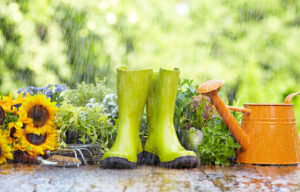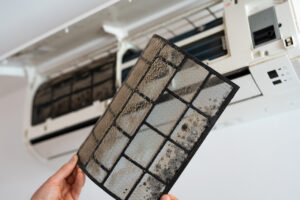 Have you ever noticed changes in your health when the weather changes?
Have you ever noticed changes in your health when the weather changes?
When it rains, do you notice your nose running?
If it’s really windy outside, do your eyes get particularly itchy?
A large majority of the public has issues relating to allergies to common molds and weeds.
I know I’m a hot mess all through September and October because I have a raging case of hay fever. My allergy meds keep it at bay most of the time, but on my worst days I very closely resemble Sloth from the movie Goonies.
All of this leads me to the effects of mold growth and allergies.
Most people associate allergies with weeds and pollen, but I hate to be the bearer of bad news. Mold growth is also a big player in the allergy game.
Mold Growth and the Weather
Because mold’s favorite living conditions are dark, damp, and humid areas, you would think the little sucker wouldn’t show up until the summer to start wreaking havoc on your home and your breathing.
While July is our peak month for mold remediation, winter still holds it’s fair share of mold woes.
Mold can find a way to grow even in the dead of winter if the conditions inside your house are right.
When the temperatures drop, most people have the habit of cranking up the heat to compensate. Inevitably, the temperature will drop a little and the trapped heat will evaporate and leave condensation in the duct work and behind your furnace.
This creates the perfect environment for mold growth and is often one of the most frequent areas we find mold growth in the winter.
Why is the Winter a Perfect Time for Mold?
Remember when we compared mold to Gremlins?
You’re not supposed to feed it and you’re not supposed to give it water.
Mold loves to feed on decaying plants and you know what the winter has a huge amount of?
You guessed it! Decaying plants. It’s basically a virtual smorgasbord of food for mold right outside your back door!
Granted, hopefully, you don’t have a multitude of dead and decaying plants inside your home (if you do, we need to reconsider your hobby as a green thumb). With mold that close to your house, however, it opens up a pretty easy pathway to inside your basement and other areas of your house.
Mold Removal in Your Home
Mold can be a pain to deal with and if you’re surprised to find it, it can be overwhelming, as well.
We never recommend trying to remove mold on your own if it’s a bigger patch than about 10 square feet. Any larger than that and it’s going to be almost too much for you to take on without professional assistance.
Lucky you, you came to the right place! We kind of know our way around mold removal and we’d be happy to help with any questions you have. Feel free to contact us today!







